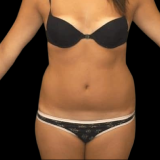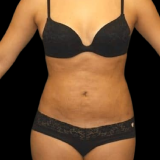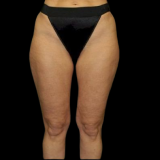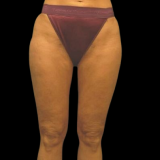Beauty is as diverse as the people who inhabit this planet. What one culture reveres as the epitome of allure, another might view with indifference. It’s this wonderful mélange of perspectives that makes the exploration of cosmetic surgery across cultures so enthralling.
In Western societies, for instance, there’s often a strong emphasis on youthful features and symmetrical faces. This preference has led to procedures like Botox, lip fillers, and facelifts gaining popularity as individuals seek to maintain a fresh and youthful appearance.
In contrast, some Asian cultures traditionally value traits like a petite nose, double eyelids, and a V-shaped jawline. This has spurred a surge in procedures such as rhinoplasty and blepharoplasty (eyelid surgery) to align with these ideals.
Meanwhile, in parts of Africa and South America, voluptuous curves and full lips are celebrated. Consequently, procedures like lip augmentation and butt augmentation have seen increased demand in these regions.
Cultural Influences on Beauty Standards:
But where do these cultural beauty standards originate? Historical, social, and even economic factors all play a role in shaping what is deemed attractive in a culture.
For instance, in South Korea, the rise of K-pop and the influence of Western media have contributed to a surge in popularity for procedures like the double eyelid surgery, which aims to create a more Westernized appearance.
Similarly, in Brazil, where beach culture reigns supreme, the emphasis on a curvaceous figure has been perpetuated by the media and societal norms. This has led to the widespread acceptance and even celebration of cosmetic procedures aimed at enhancing one’s curves.
In Iran, nose reshaping surgery, or rhinoplasty, is incredibly popular. This trend is not only influenced by aesthetic preferences but also by cultural and social norms, as a refined nose is often associated with social status and marriageability.
Of course, the topic of cosmetic surgery is not without its controversies. Critics often argue that it perpetuates unrealistic beauty standards and promotes a homogenized notion of attractiveness. And while there is certainly validity to these concerns, it’s essential to recognize that the decision to undergo cosmetic surgery is deeply personal and often rooted in complex cultural, social, and psychological factors.
However, it’s important to approach these debates with nuance and understanding. While it’s true that societal pressures and media representations can influence perceptions of beauty, it’s equally important to recognize the agency and autonomy of individuals when it comes to their bodies and their choices.
For many people, cosmetic surgery isn’t solely about conforming to external expectations; rather, it can be a deeply personal journey of self-discovery and empowerment. It’s about reclaiming ownership of one’s body, enhancing self-confidence, and addressing long-standing insecurities that may have hindered personal well-being.
Moreover, cosmetic surgery isn’t a one-size-fits-all solution. What works for one person may not be the right choice for another. An individual’s decision to undergo cosmetic enhancement is shaped by a myriad of factors, including personal values, cultural influences, and individual experiences.
It’s essential to acknowledge the positive impact that cosmetic surgery can have on individuals’ mental and emotional well-being. Studies have shown that many patients report increased self-esteem and improved quality of life following cosmetic procedures. For some, it’s not just about changing their appearance; it’s about improving their overall sense of self-worth and confidence.
Perhaps the most beautiful aspect of exploring cosmetic surgery across different cultures is the celebration of diversity. Just as there is no one-size-fits-all definition of beauty, there is no universal approach to cosmetic enhancement. Each culture brings its own unique perspective, traditions, and aesthetic preferences to the table, enriching the global tapestry of beauty in the process.
That being said, it’s crucial to approach cosmetic surgery with careful consideration and realistic expectations. Like any medical procedure, there are risks involved, both physical and psychological. It’s imperative for individuals to thoroughly research their options, consult with qualified professionals such as Dr. Widder, a board certified plastic surgeon with over 30 years of experience in the field, and weigh the potential benefits and drawbacks before making any decisions.
Furthermore, addressing the root causes of dissatisfaction with one’s appearance—whether they stem from societal pressures, personal insecurities, or cultural influences—can be just as important as the cosmetic procedures themselves. Therapy, self-care practices, and building a supportive community can all play integral roles in fostering self-acceptance and confidence.
In the end, whether you choose to embrace your natural features or enhance them through cosmetic surgery, the most important thing is that you feel confident and comfortable in your own skin. After all, beauty knows no boundaries, and it certainly doesn’t adhere to any one cultural ideal.




